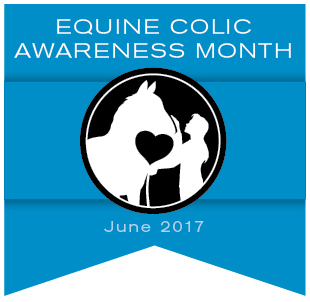As long as you know what behaviors signify a colic episode, a call to your vet will handle the rest.
The best thing you can do for your horse is pay attention. Know what his normal behaviors and personality traits are. If you know your horse well, you may sense his discomfort from the look on his face – rather than waiting for signs of even more serious discomfort.
Here are some common symptoms that your horse is experiencing mild abdominal pain:
- biting at his sides
- laying down for longer than normal
- continual shifting of weight on the hind limbs
- pawing
- decreased appetite or not eating at all
Signs of moderate pain are:
- persistent movement (even in the stall)
- frequently pawing at the ground with a forelimb
- repetitively lying down and then getting back up
- rolling after lying down
- grunting
- kicking at the belly
- frequently turning the head to the flank
Clinical manifestations of severe abdominal pain may include the following signs or behaviors:
- profuse sweating
- continuous rolling
- persistent movement
- getting up and down violently
It’s also important to know how much and what your horse has eaten and whether or not his manure frequency and consistency have been normal.
If you start seeing these signs in your horse first call the vet and then remove its feed, keep it on its feet walking if necessary, and monitor it closely until the vet arrives. Learn more about what the vet will do to treat your horse as well as what you can do prevent colic from happening in the future.






